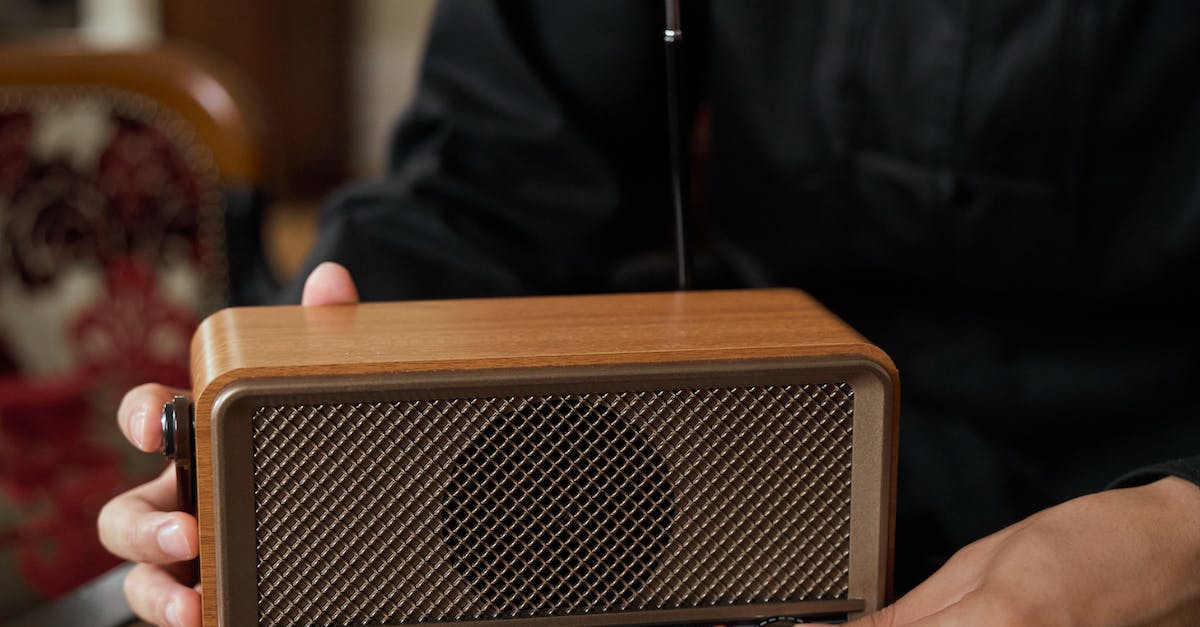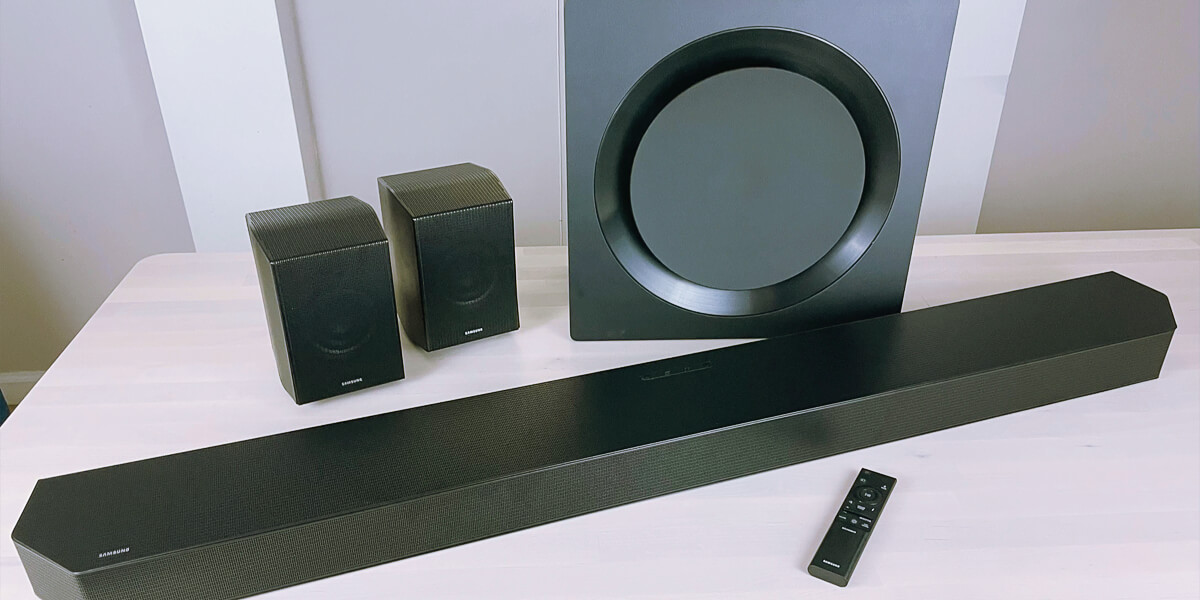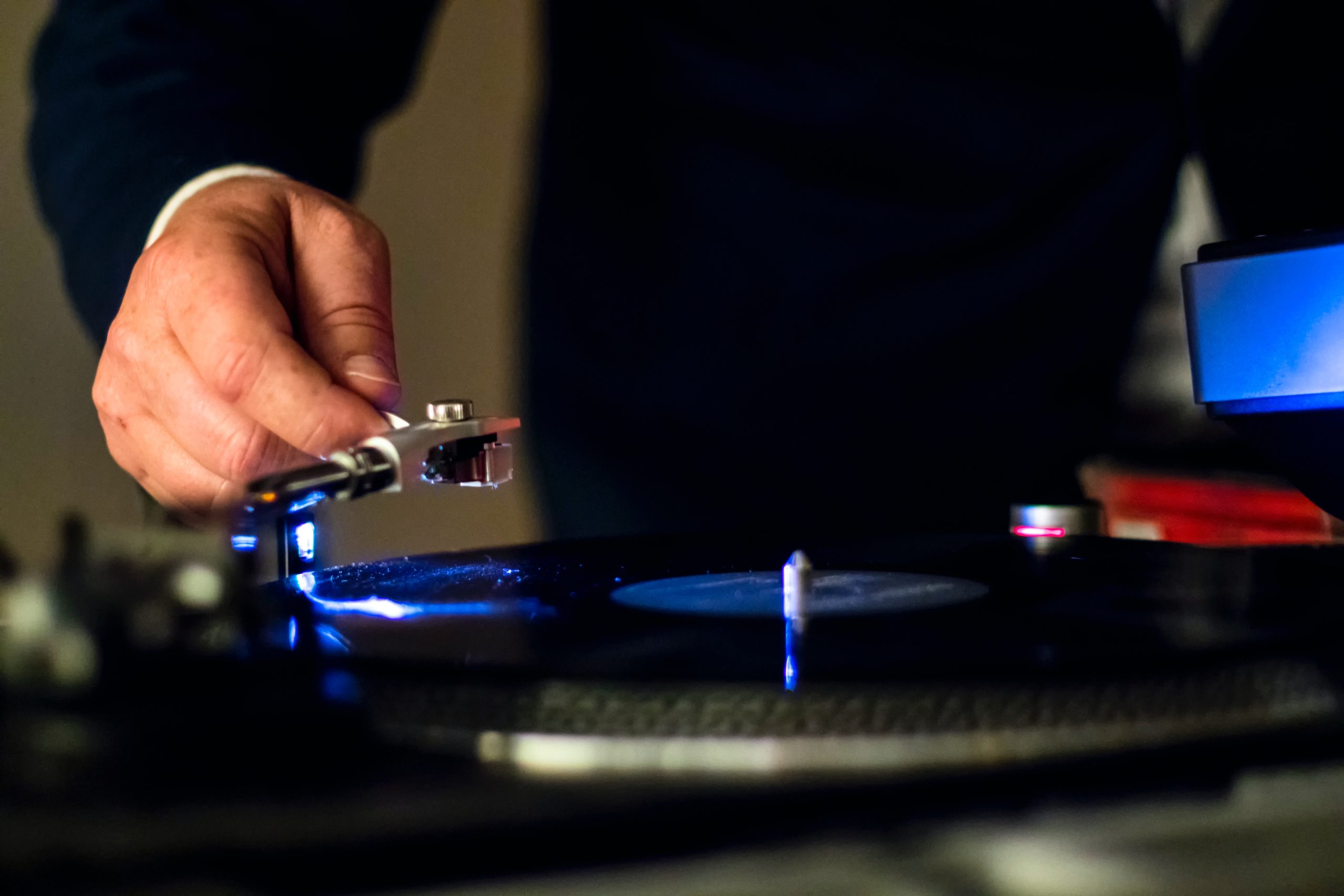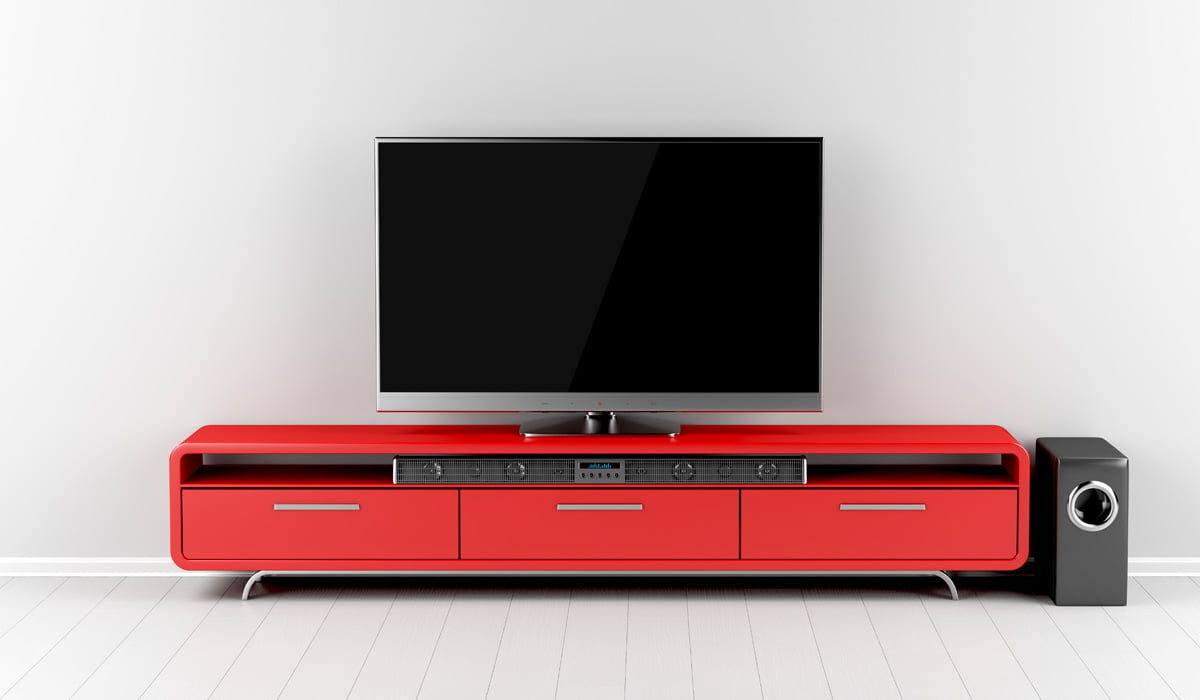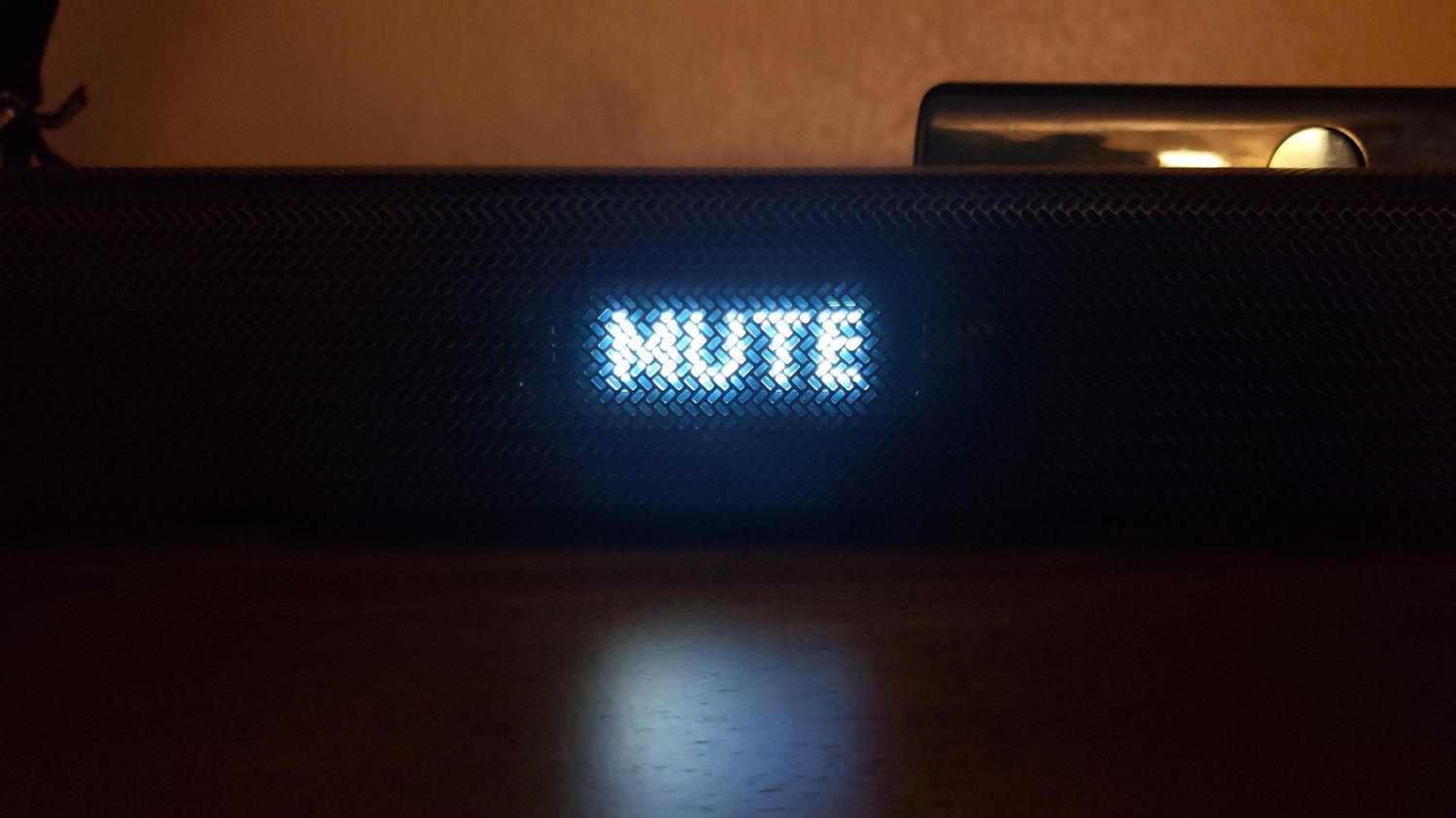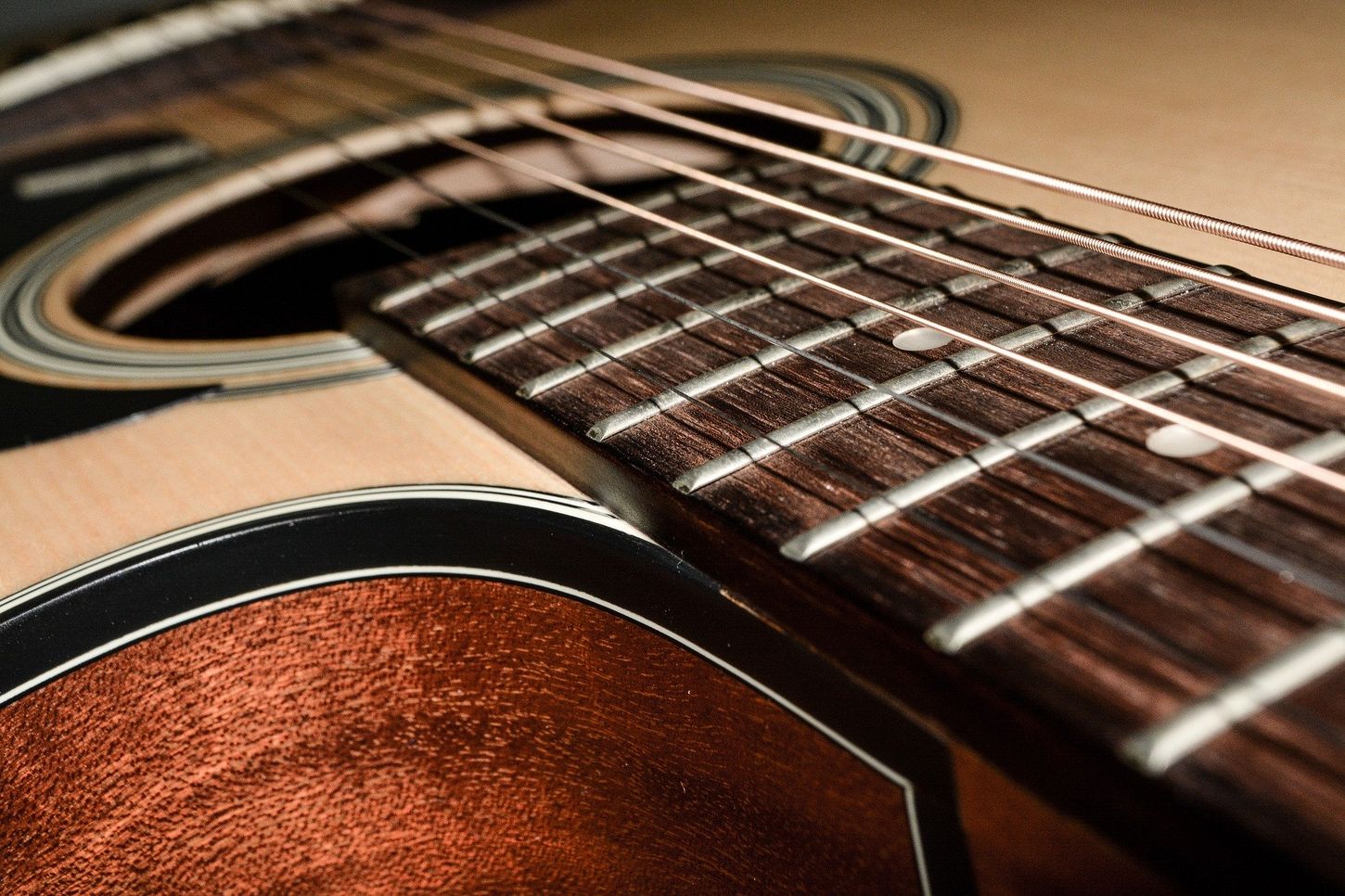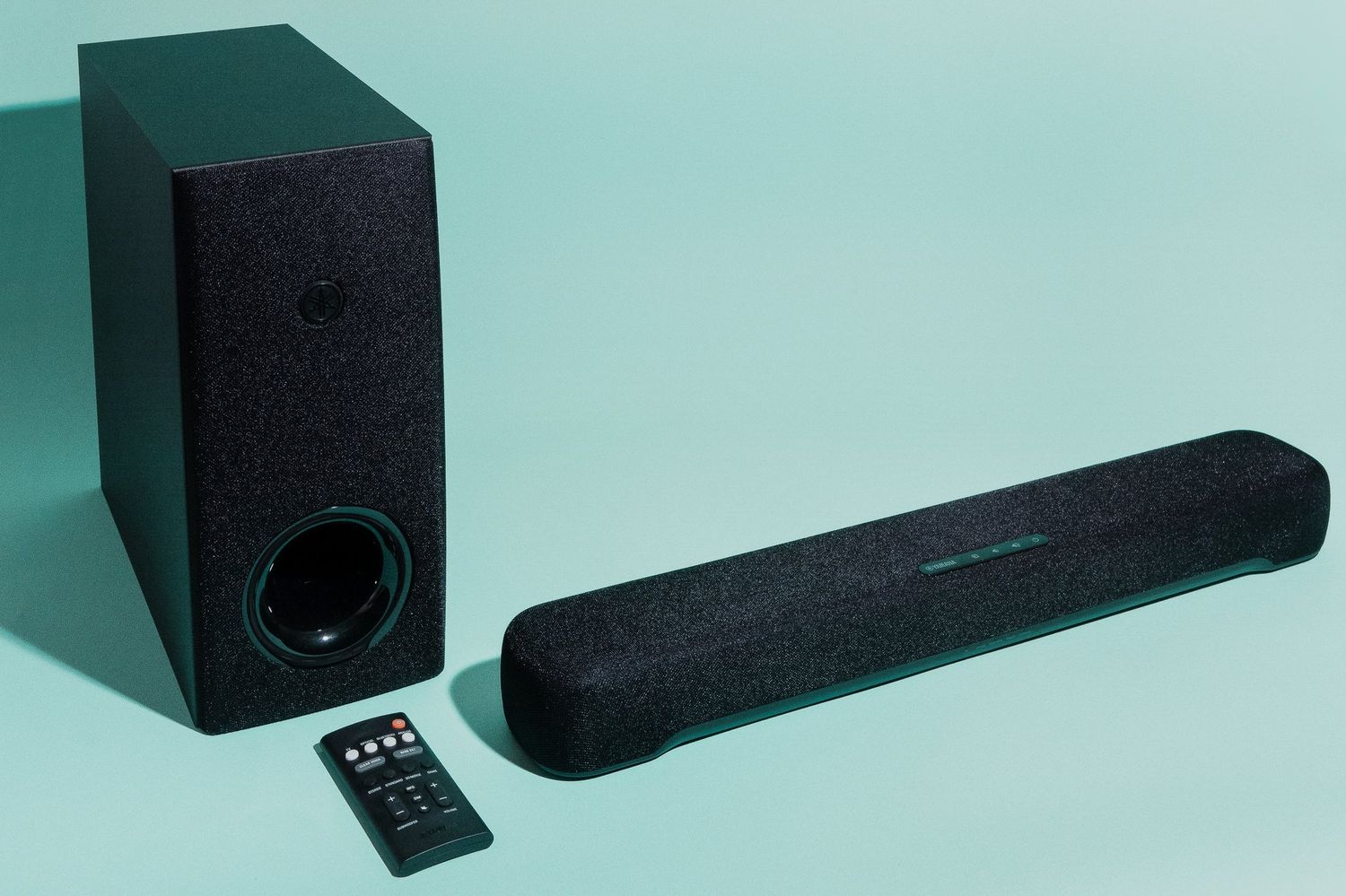Home>Production & Technology>Sound>Why Does My Phone Speaker Sound Muffled


Sound
Why Does My Phone Speaker Sound Muffled
Published: December 18, 2023
Discover why your phone speaker sounds muffled and learn effective solutions to enhance the sound quality. Don't let poor sound ruin your audio experience!
(Many of the links in this article redirect to a specific reviewed product. Your purchase of these products through affiliate links helps to generate commission for AudioLover.com, at no extra cost. Learn more)
Table of Contents
Introduction
Have you ever experienced the frustration of trying to listen to audio on your phone, only to find that the sound is muffled or distorted? If so, you’re not alone. Many people encounter this issue with their phone speakers, and it can be a major annoyance. Whether you’re trying to enjoy music, watch a video, or have a clear conversation on a call, a muffled phone speaker can significantly hinder your experience.
Understanding the reasons behind a muffled phone speaker sound is the first step in resolving the issue. There are several common causes that can contribute to this problem, ranging from simple dirt and debris accumulation to more complicated hardware or software issues. In this article, we will explore these causes and discuss effective solutions to restore the crisp and clear sound to your phone’s speaker.
It’s important to note that not all causes of a muffled phone speaker sound can be easily fixed. In some cases, professional assistance or replacement may be necessary. However, by identifying the root cause, you can better determine if it’s a problem you can resolve yourself or if you need to seek expert help.
In the following sections, we will delve into the most common causes of phone speaker sound muffling and explore step-by-step solutions to address each issue. We’ll cover everything from cleaning the speaker to troubleshooting software problems. By the end of this article, you’ll be equipped with the knowledge and tools to resolve a muffled phone speaker sound and enjoy clear audio once again.
Common Causes of Muffled Phone Speaker Sound
There are several factors that can contribute to a muffled phone speaker sound. Understanding these causes can help you identify the problem and find the appropriate solution. Here are some of the most common causes:
- Dust and Debris: Over time, dust, lint, and debris can accumulate in and around the speaker grill of your phone, causing the sound to become muffled. These particles can block the sound waves and reduce the overall audio quality.
- Water or Liquid Damage: Exposure to water or other liquids can damage the internal components of your phone, including the speaker. When water enters the speaker, it can cause the sound to become distorted or muted. This is a common issue for those who have accidentally dropped their phones in water or exposed them to moisture.
- Software Issues: Sometimes, the problem lies within the software of your phone. Glitches or bugs in the operating system can affect the audio output and lead to a muffled speaker sound. This can happen after a software update or due to incompatible apps running in the background.
- Physical Damage to the Speaker: Physical damage, such as a cracked or broken speaker, can significantly impact the sound quality. If the internal components of the speaker are damaged, it can result in muffled or distorted audio.
These are just a few of the common causes of a muffled phone speaker sound. It’s important to keep in mind that each phone model may have unique features and vulnerabilities that can contribute to this issue. By understanding these causes, you can now move on to exploring the appropriate solutions to restore your phone’s speaker to its optimal performance.
Dust and Debris
One of the most common reasons for a muffled phone speaker sound is the accumulation of dust, lint, and debris. Over time, these particles can build up in and around the speaker grill, obstructing the sound waves and significantly reducing audio quality. Fortunately, this is a relatively easy issue to address.
To clean the speaker and remove the dust and debris, follow these steps:
- Turn off your phone and remove any protective case that may be covering the speaker grill. This will ensure that you have full access to the speaker.
- Inspect the speaker grill for visible signs of dust, lint, or debris. Gently brush the grill with a soft-bristled brush or use a can of compressed air to blow away any loose particles. Avoid using too much force to prevent further damage to the speaker.
- If the exterior cleaning doesn’t fully solve the issue, you may need to remove the back cover of your phone (if applicable) to access the speaker directly. Refer to your phone’s user manual or online resources for specific instructions on removing the back cover safely.
- Once the back cover is removed, you can carefully inspect the internal speaker area for any dust or debris. Use a soft brush or a cotton swab slightly dampened with rubbing alcohol to gently clean the speaker components. Be cautious not to apply excessive pressure or get any liquid inside the phone.
- After cleaning the speaker grill and internal components, allow the phone to dry completely before turning it back on and testing the speaker. This will prevent any potential damage from moisture.
Regularly cleaning the speaker grill and removing any dust or debris can help maintain optimal sound quality and prevent future issues. It is recommended to perform this cleaning process periodically, especially if you frequently use your phone in dusty or dirty environments.
If cleaning the speaker doesn’t resolve the muffled sound issue, it’s important to explore other potential causes, such as water damage or software issues, which we will discuss in the following sections.
Water or Liquid Damage
Water or liquid damage is another common cause of muffled phone speaker sound. Accidental spills, exposure to rain, or submerging your phone in water can result in serious damage to the internal components, including the speaker. If your phone has been exposed to water or any other liquid, it’s essential to take immediate action to prevent further damage.
Here are the steps you can take to address water or liquid damage:
- Turn off your phone immediately if it’s still on and remove any protective case or cover. This will help prevent short circuits and further damage to the internal components.
- Gently wipe off any visible water or liquid on the exterior of the phone using a soft, absorbent cloth. Pay close attention to the speaker grill and remove as much moisture as possible.
- Do not use heat sources, such as hairdryers or microwaves, to dry the phone as it can damage the internal components. Instead, place the phone in a bowl or bag of uncooked rice, which acts as a desiccant and helps absorb the moisture. Leave the phone in the rice for at least 24-48 hours.
- Once the drying period is complete, remove the phone from the rice and check for any signs of moisture or residual liquid. If there are still signs of water, repeat the drying process or consider using silica gel packets instead of rice.
- After ensuring that the phone is completely dry, turn it on and test the speaker. If the sound is still muffled, or if you notice any other performance issues, it’s advisable to consult a professional technician for further evaluation and repair.
It’s important to note that the success of drying out a water-damaged phone depends on the severity of the damage and the duration of exposure to moisture. In some cases, the speaker or other internal components may need to be replaced to restore normal functionality.
To prevent future water or liquid damage, it’s a good idea to use a protective phone case that is water-resistant or waterproof. Additionally, avoid using your phone in wet or humid environments and take extra caution around bodies of water.
Now that we’ve addressed the issue of water or liquid damage, let’s move on to exploring possible software issues that may be causing a muffled phone speaker sound.
Software Issues
Software issues can also contribute to a muffled phone speaker sound. Glitches, bugs, or compatibility problems with the operating system or certain apps can affect the audio output and result in poor sound quality. Fortunately, most software-related issues can be resolved without professional assistance.
Here are some troubleshooting steps to address potential software issues:
- Check for software updates: Make sure your phone’s operating system is up to date. Software updates often include bug fixes and improvements that can resolve audio-related issues. Go to the settings menu of your phone and look for the software update or system update option.
- Restart your phone: Sometimes, a simple restart can solve software glitches. Power off your phone, wait for a few seconds, and then turn it back on. This can help refresh the system and resolve any temporary issues affecting the speaker sound.
- Clear app cache and data: If the muffled sound only occurs when using specific apps, clearing the cache and data for those apps may help. Go to the settings menu, find the Apps or Applications section, locate the app causing the issue, and clear its cache and data. Note that clearing app data may delete app settings or saved information, so be cautious.
- Disable unnecessary apps: Background apps can sometimes interfere with the audio output. Close any unused apps running in the background or consider disabling unnecessary apps altogether to free up system resources and potentially improve sound quality.
- Factory reset: If all else fails and you suspect a more complex software issue, a factory reset may be necessary. This will erase all data on your phone and restore it to its original settings. Before performing a factory reset, be sure to back up your important data as it will be lost during the process. Consult your phone’s manual or online resources for instructions on how to perform a factory reset.
By following these steps, you can troubleshoot and resolve most software issues that may be causing a muffled phone speaker sound. However, if the problem persists even after performing these troubleshooting steps, it’s recommended to seek professional assistance or contact the phone manufacturer for further support.
In the next section, we will discuss potential physical damage to the speaker and how to address it.
Physical Damage to the Speaker
In some cases, physical damage to the speaker itself can lead to a muffled phone speaker sound. Accidental drops, impacts, or exposure to excessive pressure can cause the internal components of the speaker to become damaged or misaligned, affecting audio quality. Repairing physical damage to the speaker may require professional assistance, but there are a few steps you can take to assess and potentially address the issue.
Here’s what you can do if you suspect physical damage to the speaker:
- Inspect the speaker grill: Carefully examine the speaker grill for any visible signs of damage, such as cracks or dents. If you notice any visible damage, it is likely that the speaker’s internal components have been affected.
- Test the speaker with different audio sources: Play different types of audio (music, videos, phone calls) on your phone to determine if the muffled sound persists across all sources. If the issue is specific to certain types of audio, it could indicate a problem with the audio file or media player rather than physical damage to the speaker.
- Reset audio settings: Check the audio settings on your phone and make sure they are configured correctly. Resetting the settings to default can help eliminate any software-related audio issues that may be impacting the speaker sound.
- Seek professional repair: If you have performed the above steps and the muffled sound persists, it is likely that there is physical damage to the speaker. At this point, it’s best to consult a professional technician or contact the phone manufacturer for repair options. They will have the expertise and tools necessary to diagnose and fix any internal damage to the speaker.
Repairing physical damage to the speaker may involve replacing the speaker component or other associated parts. It’s important to note that attempting to repair the speaker yourself without proper knowledge and expertise can potentially cause further damage to your phone.
Remember, prevention is always better than cure. Using a protective phone case and handling your phone with care can help minimize the risk of physical damage to the speaker and other components.
In the concluding section, we will summarize the solutions discussed and emphasize the importance of addressing a muffled phone speaker sound promptly.
Ways to Fix Muffled Phone Speaker Sound
When faced with a muffled phone speaker sound, there are several steps you can take to address the issue. Let’s recap the solutions we’ve discussed so far:
- Cleaning the Speaker: Remove dust, lint, and debris from the speaker grill using a soft brush or compressed air. If necessary, clean the internal components of the speaker with a soft brush or slightly dampened cotton swab. Regular cleaning can help maintain optimal sound quality.
- Checking for Water Damage: If your phone has been exposed to water or other liquids, power it off immediately and follow the steps to dry it out. Placing the phone in a bowl or bag of uncooked rice can help absorb the moisture. If needed, consult a professional technician for further assessment and repair.
- Troubleshooting Software Issues: Check for software updates, restart your phone, and clear app cache and data to address potential software-related problems. Disabling unnecessary apps or performing a factory reset can also help resolve audio issues caused by software glitches or compatibility problems.
- Repairing Physical Damage: If you suspect physical damage to the speaker, inspect the speaker grill for any visible signs of damage. Test the speaker with different audio sources and reset audio settings to rule out other potential issues. If necessary, seek professional repair from a technician or contact the phone manufacturer for assistance.
It’s important to emphasize the importance of addressing a muffled phone speaker sound promptly. Ignoring the issue can lead to further damage and may result in permanent loss of sound quality. Taking immediate action and following the appropriate steps can help restore the crisp and clear sound to your phone’s speaker.
Remember, prevention is key to maintaining a healthy phone speaker. Using a protective phone case, avoiding exposure to water or liquids, and handling your phone with care can help minimize the risk of damage and ensure optimal sound quality over time.
If you’ve tried the suggested solutions and the muffled sound issue persists, it’s recommended to seek professional assistance or contact the phone manufacturer for further support. They will have the expertise and resources to diagnose and fix any underlying issues that may be affecting your phone’s speaker.
By following these steps and being proactive in maintaining the health of your phone’s speaker, you can enjoy clear and uninterrupted audio experiences for all your music, videos, and phone calls.
Cleaning the Speaker
One of the most effective ways to fix a muffled phone speaker sound is by cleaning the speaker itself. Over time, dust, lint, and debris can accumulate in and around the speaker grill, obstructing the sound waves and causing a decrease in audio quality. By regularly cleaning the speaker, you can maintain optimal sound performance and prevent muffled sound issues.
Here’s how you can clean the speaker of your phone:
- Turn off your phone and remove any protective case or cover that may be obstructing the speaker grill.
- Inspect the speaker grill for visible signs of dust or debris. If you can see build-up, use a soft-bristled brush or a clean, dry toothbrush to gently brush away the particles. Be careful not to apply too much pressure or cause any damage to the speaker.
- If brushing alone doesn’t remove all the debris, you can use a can of compressed air specifically designed for electronics. Hold the can upright and use short bursts of air to blow away the dust and debris from the speaker grill. Ensure that the can of compressed air is held at a safe distance from the phone to prevent any liquid residue from being expelled onto the speaker.
- In cases where the muffled sound persists, you may need to remove the back cover (if applicable) to access the speaker directly. Refer to your phone’s user manual or consult online resources for guidance on safely removing the back cover.
- Once you have access to the speaker, inspect for any dust or debris inside and around the speaker area. Use a soft brush or a cotton swab slightly dampened with isopropyl alcohol to gently clean the speaker components. Be cautious to avoid applying excessive pressure or getting any liquid inside the phone.
- After cleaning the speaker grill and internal components, allow the phone to dry completely before turning it back on and testing the speaker. This will help prevent any potential damage from moisture.
Remember, regular cleaning of the speaker is important to prevent build-up over time. Aim to clean the speaker every few weeks or as needed, especially if you often use your phone in dusty or dirty environments.
If cleaning the speaker doesn’t resolve the muffled sound issue, you may need to explore other potential causes, such as water damage or software issues, as discussed in previous sections. It’s important to address any underlying issues promptly to ensure the best audio experience on your phone.
Checking for Water Damage
Water damage is a common cause of a muffled phone speaker sound. If your phone has been exposed to water or any other liquid, it’s essential to take immediate action to prevent further damage and restore the audio quality. Here are the steps you can take to check for water damage:
- Power off your phone immediately if it’s still on. This step is crucial to avoid short circuits and potential damage to the internal components.
- Remove any protective case or cover from your phone to ensure full access to the speaker area.
- Gently inspect the exterior of the phone for visible signs of water or liquid, such as water droplets or moisture. Pay close attention to the speaker grill and any other openings where liquid may have entered.
- Using a soft, absorbent cloth, carefully wipe off any visible water or liquid on the external surface of the phone, including the speaker grill. Be gentle to avoid pushing any liquid further into the device.
- After drying the external surface, assess the speaker’s performance by playing audio through it. If the sound is muffled or distorted, it indicates that there may be water or liquid inside the speaker.
- If you suspect water damage, it’s advisable to follow the steps for drying out a water-damaged phone. Turn off the phone and place it in a bowl or bag of uncooked rice, which acts as a desiccant to absorb moisture. Leave it in the rice for at least 24-48 hours to ensure thorough drying.
- After the drying period, remove the phone from the rice and carefully examine it for any remaining signs of moisture or liquid. If there are still indications of water, you may need to repeat the drying process or consider using silica gel packets, which are specifically designed for removing moisture.
- Once you are satisfied that the phone is completely dry, power it on and test the speaker again to see if the muffled sound issue has been resolved. If the problem persists, it’s recommended to seek professional assistance or contact the phone manufacturer for further guidance.
It’s important to note that the success of drying out a water-damaged phone depends on the severity of the damage and the duration of the exposure to moisture. If the problem persists or if you suspect extensive water damage, it’s best to consult a professional technician to evaluate and repair your phone.
To minimize the risk of water damage in the future, consider using a water-resistant or waterproof phone case and avoiding exposure to water or liquid environments whenever possible. Taking preventive measures can help safeguard your phone and maintain optimal speaker performance.
Troubleshooting Software Issues
Software issues can often be the cause of a muffled phone speaker sound. Glitches, bugs, or compatibility problems with the operating system or specific apps can affect the audio output, resulting in poor sound quality. Fortunately, many software-related issues can be resolved through troubleshooting steps. Here’s what you can do:
- Check for software updates: Ensure that your phone’s operating system is up to date. Software updates often include bug fixes and performance enhancements that can address audio-related issues. Go to the settings menu on your phone and search for the software update or system update option to check for any available updates.
- Restart your phone: A simple restart can often resolve software glitches. Power off your phone, wait for a few seconds, and then turn it back on. This can help refresh the system and clear any temporary issues affecting the speaker sound.
- Clear app cache and data: If the muffled sound only occurs when using certain apps, clearing the cache and data for those apps may help. Go to the settings menu, find the Apps or Applications section, locate the app causing the issue, and clear its cache and data. Keep in mind that clearing app data may reset app settings or delete saved information, so proceed with caution.
- Disable unnecessary apps: Background apps can sometimes interfere with audio output and impact speaker performance. Close any unused apps running in the background or consider disabling unnecessary apps altogether to free up system resources and potentially improve sound quality.
- Factory reset: If all else fails and you suspect a more complex software issue, a factory reset may be necessary. This process will erase all data on your phone and restore it to its original settings. Before proceeding, make sure to back up your important data as it will be lost during the reset. Consult your phone’s manual or search online resources for instructions on how to perform a factory reset specific to your device.
By following these troubleshooting steps, you can often resolve software-related issues affecting the muffled phone speaker sound. However, keep in mind that a factory reset should be considered as a last resort, as it will erase all data and settings on your phone. If the problem persists even after performing these steps, it may be necessary to seek professional assistance or contact the phone manufacturer for further support.
Regularly updating the software on your phone and keeping it optimized can help prevent software-related issues from affecting audio quality. Additionally, being mindful of the apps you install and their compatibility with your specific phone model can also contribute to a smoother user experience and better speaker performance.
In the next section, we will discuss how to address physical damage to the speaker, another possible cause of muffled phone speaker sound.
Repairing Physical Damage
In some cases, physical damage to the speaker can be the cause of a muffled phone speaker sound. Accidental drops, impacts, or exposure to excessive pressure can result in damage or misalignment of the internal speaker components, affecting audio quality. Repairing physical damage to the speaker may require professional assistance, but there are a few steps you can take to assess and potentially address the issue.
Here’s what you can do if you suspect physical damage to the speaker:
- Inspect the speaker grill: Carefully examine the speaker grill for any visible signs of damage, such as cracks, dents, or other indications of physical trauma. If you see any visible damage, it is likely that the speaker’s internal components have been affected.
- Test the speaker with different audio sources: Play various types of audio, such as music, videos, or phone calls, to determine if the muffled sound persists across all sources. If the issue is specific to certain audio types or applications, it could indicate a problem with audio files or software rather than physical damage to the speaker.
- Reset audio settings: Verify the audio settings on your phone to ensure they are correctly configured. Resetting the settings to default can help eliminate any software-related audio issues that may be affecting the speaker sound.
- Seek professional repair: If you have performed the above steps and the muffled sound persists, it is likely that there is physical damage to the speaker. At this point, it’s best to consult a professional technician or contact the phone manufacturer for repair options. They will have the expertise and tools necessary to diagnose and fix any internal damage to the speaker.
Repairing physical damage to the speaker may involve replacing the speaker component or other associated parts. It’s important to note that attempting to repair the speaker yourself without proper knowledge and expertise can potentially cause further damage to your phone.
Remember, prevention is always better than cure. Using a protective phone case and handling your phone with care can help minimize the risk of physical damage to the speaker and other components. Avoiding accidental drops or impacts can help preserve the audio quality of your phone.
If you suspect physical damage to the speaker and you are unable to resolve the issue through the above steps, it’s recommended to seek professional assistance or contact the phone manufacturer for further guidance. They will have the specialized skills and resources to diagnose and repair any underlying issues with the speaker.
Conclusion
Dealing with a muffled phone speaker sound can be frustrating, but with the right knowledge and actions, you can resolve the issue and restore clear and crisp audio. Throughout this article, we have explored the common causes of a muffled phone speaker sound and provided effective solutions to address each one.
We started by discussing the accumulation of dust and debris as a common cause, emphasizing the importance of regular cleaning to maintain optimal sound quality. Next, we addressed the issue of water or liquid damage, highlighting the necessary steps to dry out a water-damaged phone and prevent further damage.
Software issues were then explored, highlighting troubleshooting steps such as checking for software updates, restarting the phone, and clearing app cache and data. We also discussed the potential need for a factory reset in more complex cases.
Lastly, we addressed physical damage to the speaker, advising on how to assess the speaker’s condition and seek professional repair if necessary.
It’s important to remember that prevention is key to maintaining a healthy phone speaker. Using a protective phone case, avoiding exposure to water or liquids, and handling your phone with care can help minimize the risk of damage and ensure optimal sound quality over time.
If you have followed the recommended steps for troubleshooting and the muffled sound issue persists, it is advisable to seek professional assistance or contact the phone manufacturer for further support. They have the expertise and resources to diagnose and address more complex issues that may be affecting your phone’s speaker.
By taking prompt action, addressing the causes, and implementing the suggested solutions, you can enjoy clear and uninterrupted audio experiences for all your music, videos, and phone calls. Don’t let a muffled phone speaker sound hinder your overall phone experience; take the necessary steps to restore the sound quality and maximize your enjoyment of your device.

